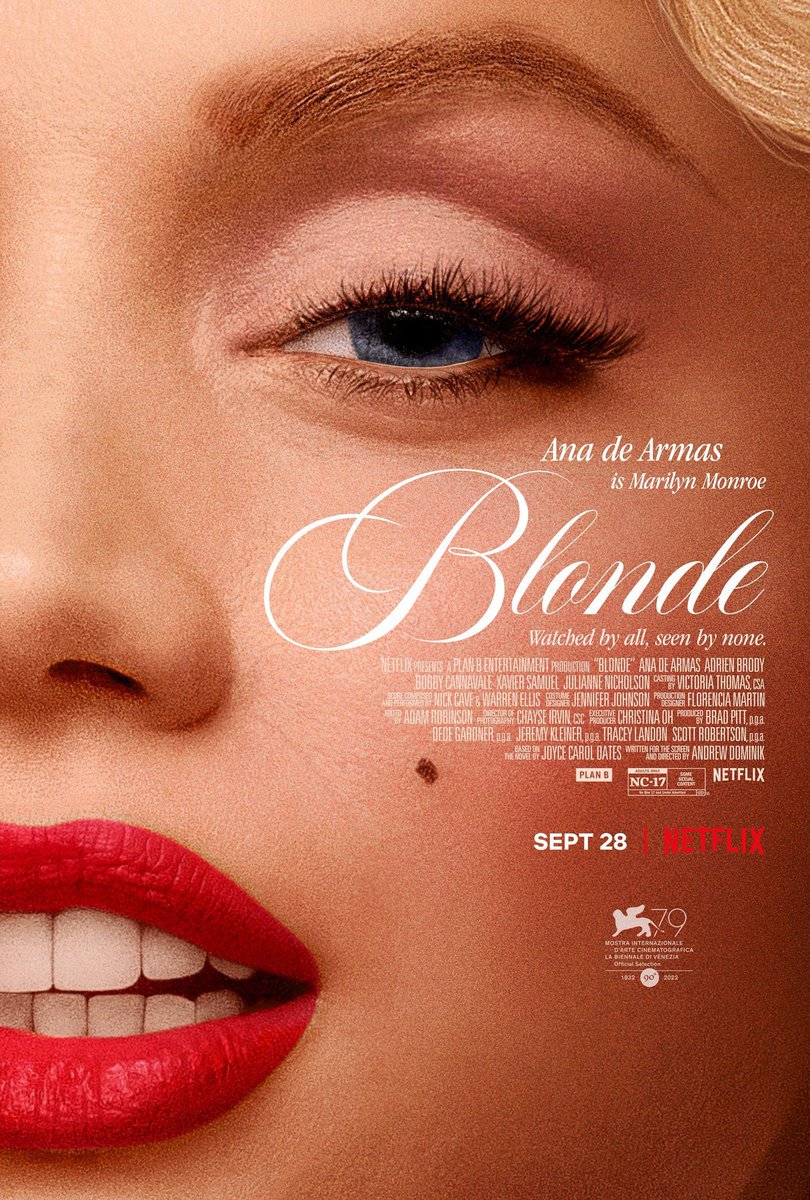Marilyn Monroe’s final interview is a heartbreaker. Published in Life magazine on August 3, 1962—just a day before the actress died of a barbiturate overdose at age 36—it found Monroe reflecting on her celebrity status, alternatively thoughtful, frank and witty.
“When you’re famous you kind of run into human nature in a raw kind of way,” she observed. “It stirs up envy, fame does. People you run into feel that, well, who is she—who is she, who does she think she is, Marilyn Monroe?”
That same question—who was the real Monroe?—has sparked debate among cinema scholars, cultural critics, historians, novelists, filmmakers and the general public for decades. Was “Marilyn,” the personality and persona brought to life by the star’s younger self, Norma Jeane Mortenson, a real person? Or was she simply a manufactured image?
Andrew Dominik’s new film Blonde, starring Ana de Armas as Monroe, adds another layer to this age-old question in a fictionalized narrative of the actress’ life that’s equal parts glamorous and disturbing. Based on Joyce Carol Oates’ 2000 novel of the same name, the movie imagines a Monroe torn between two disparate selves. As the star explains in the film’s trailer, her stage persona isn’t real. “When I come out of my dressing room, I’m Norma Jeane. I’m still her when the camera’s rolling,” she pleads, haunted and exhausted. “Marilyn Monroe only exists on the screen.”
Film historian Michelle Vogel, author of Marilyn Monroe: Her Films, Her Life, echoes this view. “I don’t think there was a ‘real’ Marilyn Monroe,” says Vogel in an interview. “She was a character and a persona to be played, both on and off the screen. At the heart of it all, Marilyn Monroe was still Norma Jeane. … When she acted a part, it was Norma Jeane, playing Marilyn Monroe, playing said role. Not easy.”
Cultural historian Sarah Churchwell, meanwhile, contends in The Many Lives of Marilyn Monroe that “Monroe is not best understood as only an image, or as an ‘artificial creation of a woman.’ … Something that is not natural can still be real: It has been made. One of the questions the stories about Marilyn’s life beg, therefore, is how much any of us is natural, whether any identity is not made.”
Here’s what you need to know about the true history behind Blonde—and the woman, actress and image that was Monroe—ahead of the film’s release on Netflix on September 28.
